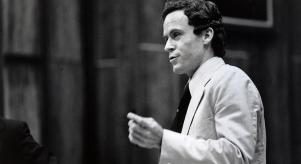
The murder of Joanna Yeates: Trial by tabloid
It is now more than a decade since the murder of Jo Yeates – a case which shocked and gripped the whole country throughout 2010s festive season. This was no fleeting news story. It was a family’s personal tragedy which exploded into a kind of national obsession – a real-life whodunit whose every detail made headlines. Even today, long after the closure of the case, it stands as a kind of grim lesson in what happens when a media feeding frenzy gets out of control.
What was it about the Jo Yeates case which attracted such intense limelight for such a protracted period? Looking back on it now, it seems there was a clear constellation of factors which aligned to trigger the frenzy. For one, Jo Yeates was a young, photogenic white woman of impeccably respectable standing. Hailing from a well-to-do family, she was privately educated, had just begun her career as a landscape architect, and lived with her boyfriend. In other words, she ticked all the boxes when it came to what social scientists call ‘missing white woman syndrome’ – a well-documented tendency within the press to give disproportionate attention to cases involving such victims, compared to crimes involving women of colour or from lower socioeconomic backgrounds.
But it wasn’t simply that Jo Yeates herself proved to be a sort of irresistible archetype for journalists to obsess over. There was also the intrigue of the case itself, which was as enigmatic as a scripted mystery. The fact that Jo’s boyfriend came back to their Bristol flat after a weekend away to find her mobile phone in her coat and no trace of her anywhere. The fact that she had last been seen on a night out with friends on 17 December, before popping into some shops to buy pizza and cider, and then apparently vanishing into thin air after she got back to the safety of her home. And then there was the fact her body was eventually discovered on Christmas Day, the date and the season providing a horribly poignant counterpoint to the slow unfolding of the tragic facts.
The arrest of her landlord, Christopher Jefferies, was the next pivotal point which kept the country captivated. Retired teacher Jefferies lived in another flat in the same building, and was instantly caricatured and condemned by the press for his eccentric appearance and delicate, old world mannerisms. Photos of Jefferies, with his penetrating gaze and shock of silvery hair, were plastered all over the front pages, alongside headlines like ‘The Strange Mr Jefferies’ and ‘Jo Suspect is Peeping Tom’. Locals were quoted as calling him the ‘nutty professor type’, and even the most innocuous aspects of his life and career were trawled through for ‘clues’ as to his ‘sinister’ nature.
One newspaper breathlessly reported that Jefferies had once shown a 1960s ghost story film to students at his old college. The same article ran a quote by an ex-pupil who said that ‘although there was nothing sexual in his behaviour towards us, we were never quite sure about him. He was seen as effeminate.’
Another article even seemed to find something suspect about Jefferies’ literary tastes, calling him ‘weird’ and ‘posh’ because he ‘loved culture, poetry’. This character assassination was so severe that even more cool-headed, press-savvy observers were swept up in it.
The truth, of course, was that Jefferies was entirely innocent
One of them was Peter Morgan, the screenwriter who would go on to create the TV drama The Lost Honour of Christopher Jefferies. Speaking to the Guardian after the case closed, he remembered the glaring contrast between Jo Yeates and the man the press decided was her killer. ‘Here was this perfect daughter of England – attractive, educated, a happy marriage and professional life ahead of her,’ Morgan said. ‘I presumed [Jefferies] was a lonely man who was mad with jealousy at the idea of this young, hopeful, happy woman having a good life ahead of her.’
The truth, of course, was that Jefferies was entirely innocent. Jo’s killer was in fact the eminently ‘normal’ seeming engineer Vincent Tabak, who lived next door to his victim and was certainly not as marketable a villain as the guiltless Jefferies. During the Leveson Inquiry into the ethics of the press, which took place in 2011 and 2012 in the wake of the News of the World phone hacking scandal, Jefferies submitted a statement. ‘The national media shamelessly vilified me,’ it statement read. ‘The UK press set about what can only be described as a witch hunt.’ So wronged was Jefferies that he received libel payouts from numerous newspapers over false claims and smears.
Taken altogether, the fallout of the Yeates case, the Leveson Inquiry, and the closure of the News of the World in 2011 all seemed to signal a turning point for the British media – a triple-whammy to inspire soul searching and a desire to do better, and play fairer. Since then, of course, social media has achieved prominence as a tool for information and misinformation, and we’ve entered the era of ‘fake news’. The question to ask, on the 10-year anniversary of her tragic death, is whether the lessons of the Jo Yeates case, which helped shift things in the 2010s, will still cut through in the new noise of the 2020s.






